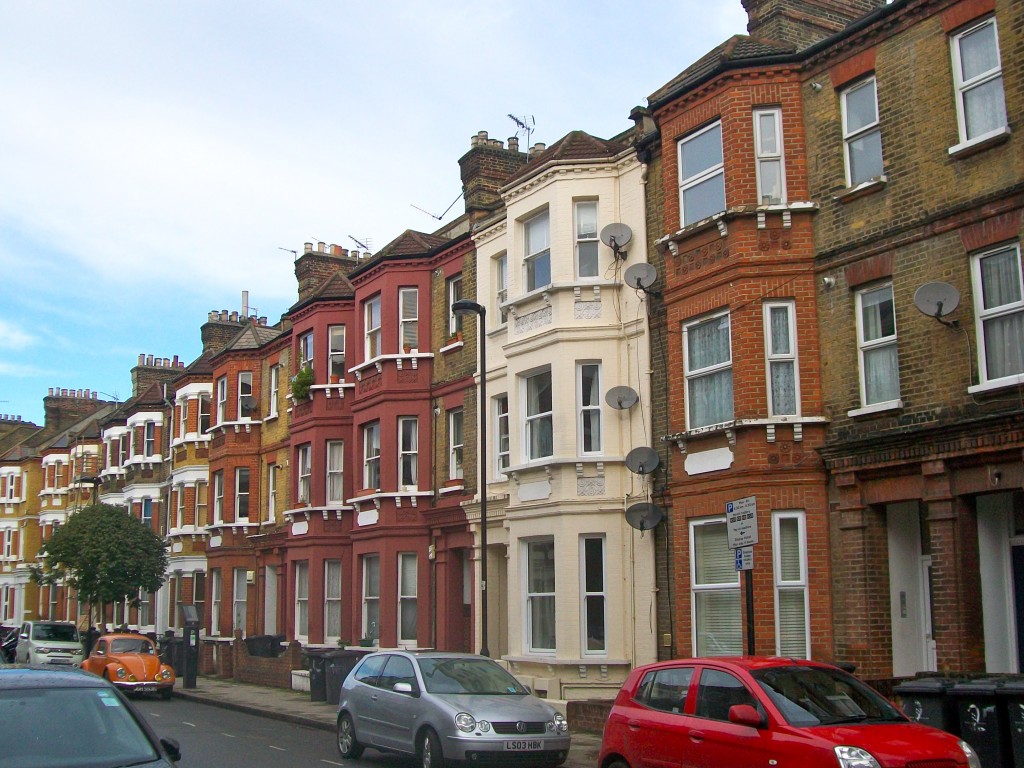
An Overview…
Handforth Road is a curved road that bends from Clapham Road to Brixton Road, it was built in 1890 and is almost entirely residential. The street was originally comprised of individual houses which must have been very spacious as they have almost all been converted into flats. British History Online tells us that “Nothing is known about the early history of the land between Prima Road, South Island Place, Clapham Road and Brixton Road. The area formed a no-man’s land bounded by the Manor of Kennington and Vauxhall Creek on the north, by Vauxhall Manor on the west and by Lambeth Wick Manor on the east and south. It may perhaps be identified with 18 acres held by Robert Addison of St. Saviour’s, Southwark, butcher, who was presented in 1640 to the Court of the Commissioners of Sewers to scour the sewer which lay along his ground near Hazards Bridge. Hazards Bridge crossed Vauxhall Creek at the north end of Brixton Road.”
“In 1870 another John Wright, who was then owner of the estate, disposed of it in two parts. The northern part, between Prima Road and the present gardens of houses in Handforth Road, was sold to Philip Edward Sewell of Norfolk, civil engineer. The southern portion was acquired by Robert and Isaac Crewdson, and Handforth and Crewdson Roads were subsequently laid out across it.”
So at least we know who built the street, quite where they got the name Handforth from however is anyone’s guess, does anyone out there know?
The above image shows Handforth Road in 1921.
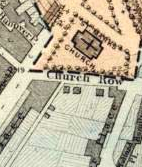
The 1876 Ward map shows the area that Handforth Road now stands on was once gardens, this is the case of much of the land on which our local streets were built on. Originally these gardens would have just been open countryside.
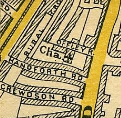
Handforth Road appears on Stanfords Map of Central London in 1897 (Above).
Charles Booth’s Map of London Poverty research took him to Handforth Road in 1895. The Map above is from 1898 and shows how Booth graded Handforth Road. The key to what the colours mean can be seen to the right of the image. For more information on Charles Booth and the classification of poverty see here. Booth graded Handforth Road as ‘Pink’ which was ‘Good ordinary earnings’.
It is unclear as to exactly when the houses of Handforth Road were converted into flats. Each individual block had it’s own quaint name although I am doubtful that the postal service still delivers based on these titles today.
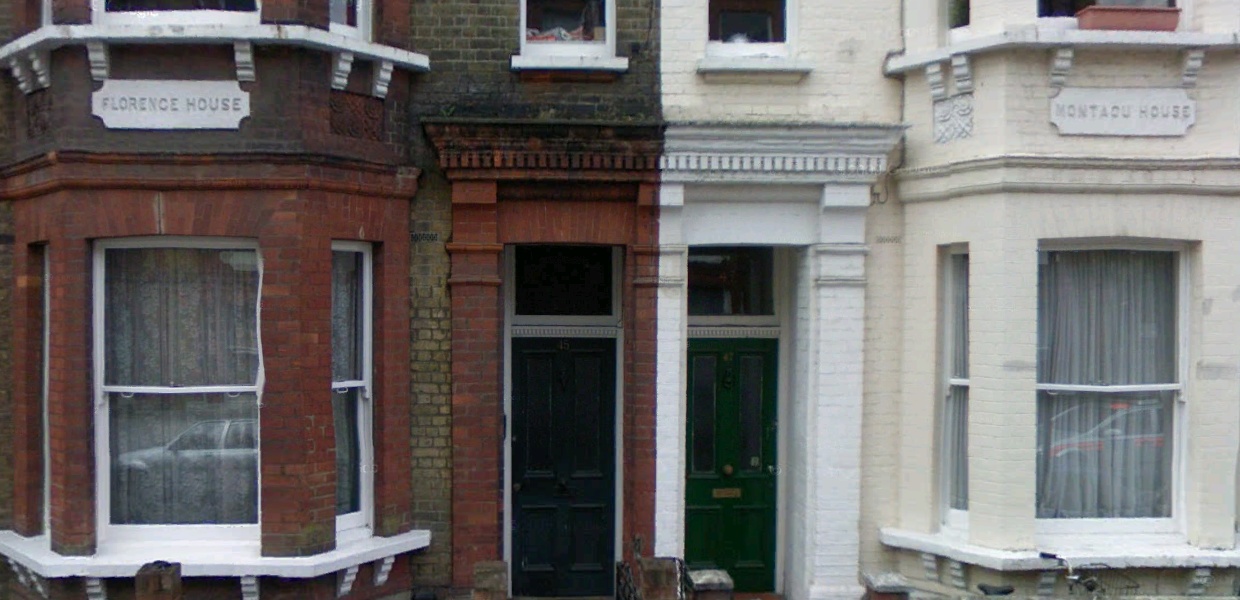
Florence & Montagu house, each block had a name on the front, this theme continues for the whole street.


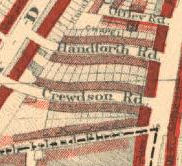
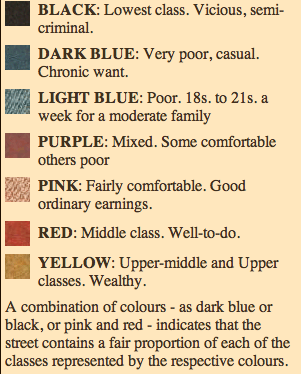
As a point of information, having lived in two buildings on this street, I can tell you they weren’t built as mansion blocks. I think the names on the buildings (and only some are named) merely reflect a form of nominative gentrification: give your house a name, and it’s automatically fancier than one with only a number. The flats that are now within the buildings are very obviously converted from larger houses, and indeed a couple of the houses remain single-residence properties.
(Excellent, interesting and informative blog by the way.)
I bought the top flat of 35, which is “Warwick House”. I tried an experiment, sending a letter to
Warwick House, Handforth Road, SW9 0LL, but it never arrived.
I lived on the first floor at number 9 back in the late 70s. As part of a flat share. Carol and Freddie Lane and their sons lived on the ground floor and David Grindrod (then of the RSC) now a very famous casting director lived upstairs. Whole street was then very down at heel as was The Oval in general. I left about 1980 and the landlord – Mr Abrahams – offered me a whole flat for £8,500 in the street. You would not buy one for that now.
I owned the top floor flat at No.41 in 1986-95 but was never able to discover anything about its name – Urmston House – or much about Bugatti’s showroom and workshops at 1-3 Brixton Road.
I lived on the ground floor of number 17 Handforth Road in the early 70’s. I was a student like so many of the flats occupants of that time. They were cheap flats and unscrupulous landlords did well out of hard up students as maintenance was minimal. The area was pretty run down but home for a couple of years. Still I think it was easier from my generation then now. Probably not student flats today ?Ah Nostalgia!
I was brought up in 39 Handforth Road which had been in my mother’s family since it was built. However, both 39 and 38 were rented out to sitting tenants and the houses cost more to run than came in in rent! My mum had to move with my dad into a small flat at the back of 39 when I was born in 1955, as they had nowhere else to live, Eventually we moved to the top floor of the house and one of my first memories is a second inside toilet being installed.
I have a hunch that these buildings were mainly built for the rooms to be rented out (shared toilet, no bathroom). The Broadbents lived in two rooms at the front middle floor, and I think they had been there since before the First World War. Their flat still ran on gas lighting right into the middle 1960s.
Few of the other people I knew on the street lived in what we think of as self-contained flats. It was more like a “shared house” with one family on the ground floor, one on the middle floor and perhaps some people living in single rooms on the top floor.
My mum and her brother sold number 38 (all of it) for £10k in 1975 or thereabouts — with one sitting tenant, Mrs Mitchell, on the top floor. She died a couple of years later and the new owners probably made a pretty penny.
She sold 39 Handforth Road (all of it) for about £55k in 1986, mainly because the front of the house was separating from the main body of the building, and she could not afford the expensive structural work required. I think that the bomb that hit Crewdson Road and South Island Place caused a fair bit of sub-ground movement and that the house suffered from this for decades.
The strange thing is that number 39 today still has that bush at the front and still has the odd different colour scheme from the ground floor to the top two floors. My dad had started to repaint the entire house, but never got further than just doing the ground floor.
Its name was “Ebenezer House”. I had friends at number 23 and at, I think, number 34 – a Cypriot family whose son Philip was born a couple of days after me.
Apart from six years in Canterbury I have lived my entire life in south London, but I will always have a soft spot for The Oval, which was where I started.
I used to live at 34 Handforth Road from 1970 to 1974 with my mum and dad. The house was still like a shared house, not properly separated into flats. We had to share a toilet with the lady on the middle floor (Mrs Elliott) we were on the top floor and there was no bathroom. I think the ground floor tenants probably used an outside toilet! We moved across the road to number 37 from 1974 to 1981 again to the top floor flat which had been modernised and we finally had a bathroom luxury! I loved living there we moved back to my mum and dad’s home town in Linolnshire in 1981. I went back in 2014 to see the street and area which has been gentrified a little bit. Great memories of playing in Kennington Park. I used to go to Henry Fawcett Infants and Junior Schoo.